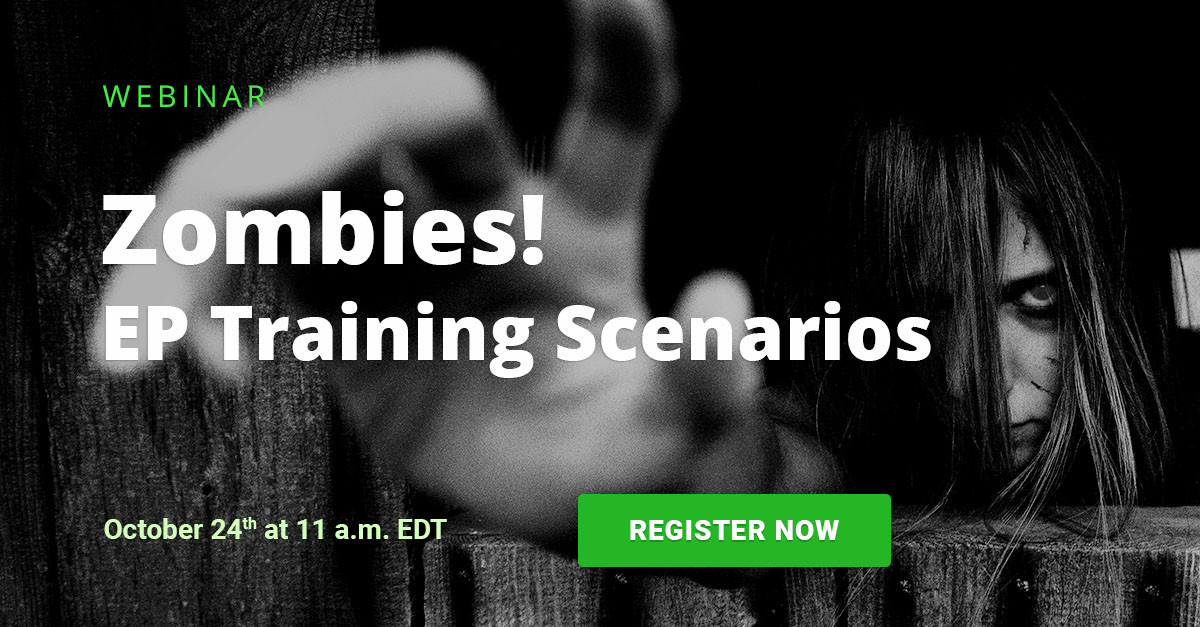Emergency Preparedness Training Resources
Feeling Stuck? Check Out These Emergency Preparedness Training Resources
Organizations wanting to invest time and resources into emergency preparedness training often experience challenges getting started. And it's understandable why: A new catastrophe is reported almost daily, whether it's another shooting, natural disaster or cyber attack. With so many threats happening, prioritization can be difficult, especially for companies that haven’t conducted a risk assessment.
Resources are available to help companies overcome the challenge of implementing emergency preparedness programs. If you do not have a risk management or preparedness professional on staff, don’t work with an outside consultant or just want to vary your company's routines, emergency preparedness programs are available in various formats for you to use to train your employees.
The training will:
- provide the basis for a safe workplace
- help employees execute protective actions instinctively
- minimize damage to the business
- help build a culture of preparedness
Threat Example: Active Shooters and Preparedness Plans
One ever-present threat to consider preparing for is an active shooter. As the United States saw several times just in October and November 2018, active shooters have been targeting businesses and places of worship.
The massacre at a Pittsburgh synagogue that left 11 dead, the shooting at a supermarket in Kentucky that claimed two lives (which authorities say was intended to be carried out at a nearby church), and the shooting at a Tallahassee yoga studio that killed two and wounded five more demonstrate the need to be prepared. Active shootings are usually premeditated, as we have previously discussed.
It takes an average of three minutes until police arrive at an active shooter event. By then, the carnage may have ended. Those three minutes are critical, and employees must be able to execute at least one of the following three steps to protect themselves: “Evade, Shelter and Barricade, and Fight and Counterattack.”
Businesses, schools and the public can benefit from using this response plan; its steps can be customized and do not need to be employed in a sequential order. In short, the steps dictate you should:
- Evade: The best way to mitigate the risk of harm during an active shooter situation is to stay away from the confrontation altogether.
- Shelter and Barricade: If you can’t leave the building safely and find yourself confined to one area such as your office, you need to keep the shooter from accessing your location. This portion of the plan relies heavily on the organization’s pre-identified interior shelters, which should be established during emergency preparedness training.
- Fight Back: If you are near the active shooter or are confronted by him, protecting yourself by attacking in a group can save your life and the lives of others.
Immediate Resources
A tabletop exercise is a discussion-based session where team members meet to walk through a simulated emergency situation. Key personnel are assigned emergency management roles and responsibilities and they discuss the various actions they would take in this emergency scenario. After the exercise is completed, a facilitator discusses what can be improved upon and that feedback is used to improve the emergency preparedness plan and future training.
Companies can use AlertFind's tabletop “zombie exercise,” which includes three different scenarios to train their employees and staff.
If you’re looking for more examples of training exercises, local, state and federal agencies offer some good examples:
They include:
- FEMA exercises
- City & County of San Francisco Recommended Exercises
- Exercises for IT Plans And Capabilities
To learn more from Bob Clark about how to create engaging and educational training exercises, listen to our new webinar, “Zombie Apocalypse! Bring Your Training Exercises To Life.”

You are well on your way toward protecting your staff and organization.
Take the next step toward protecting your organization by learning more about emergency notification systems and the vital role they play in your emergency preparedness plan.
